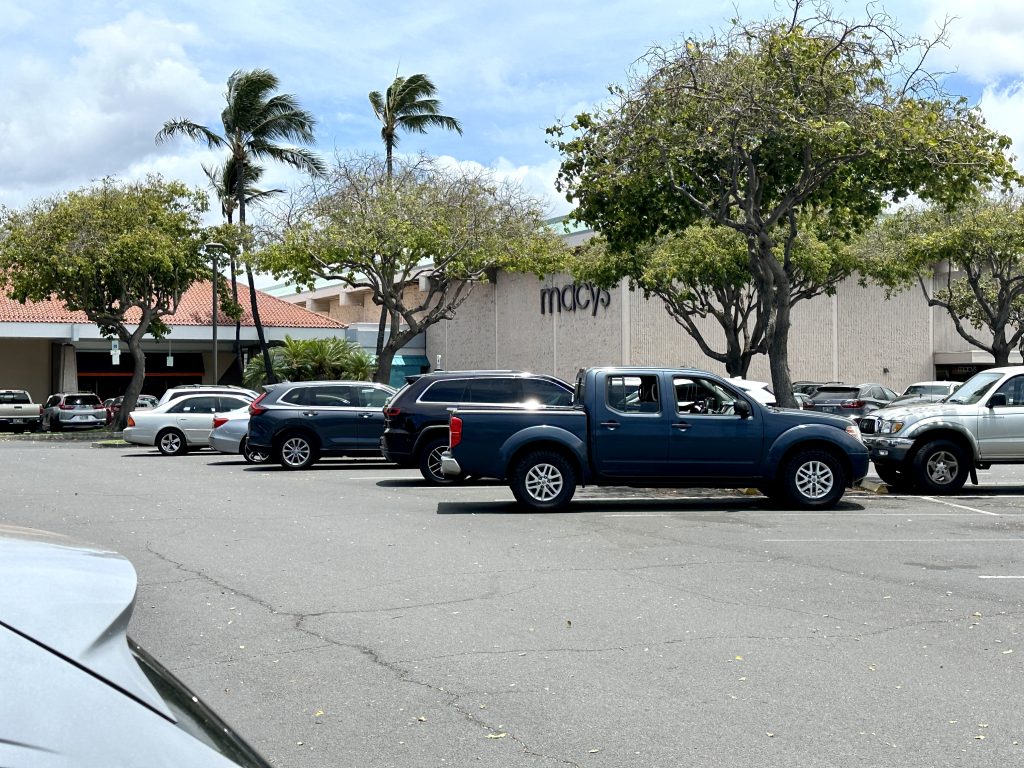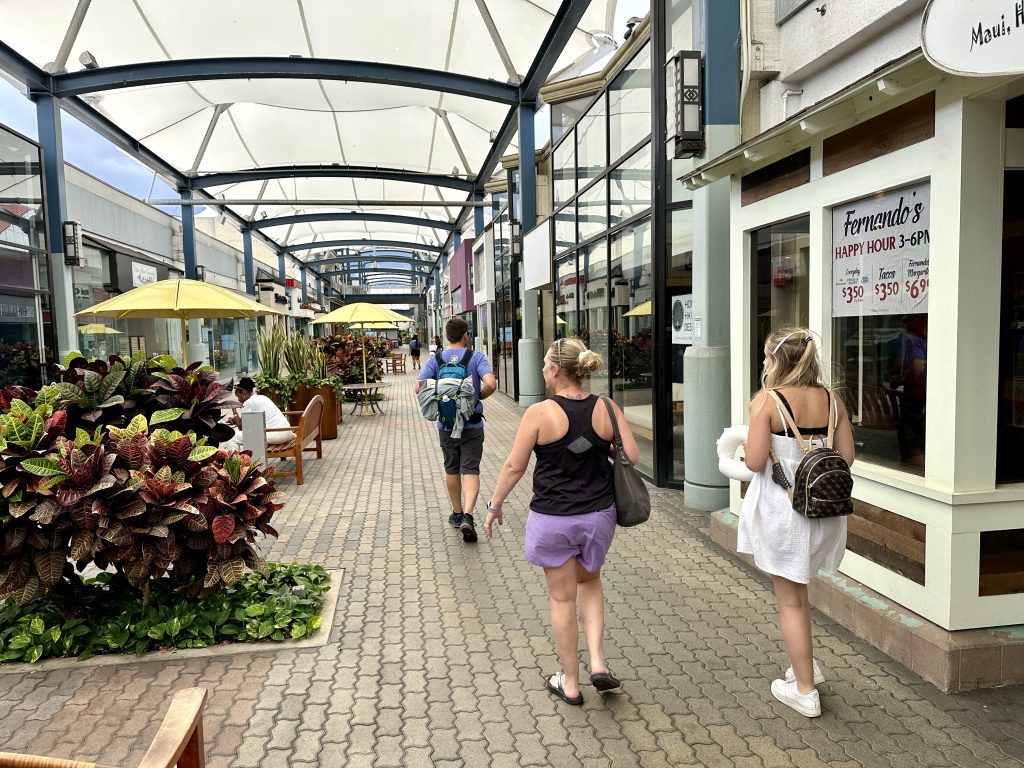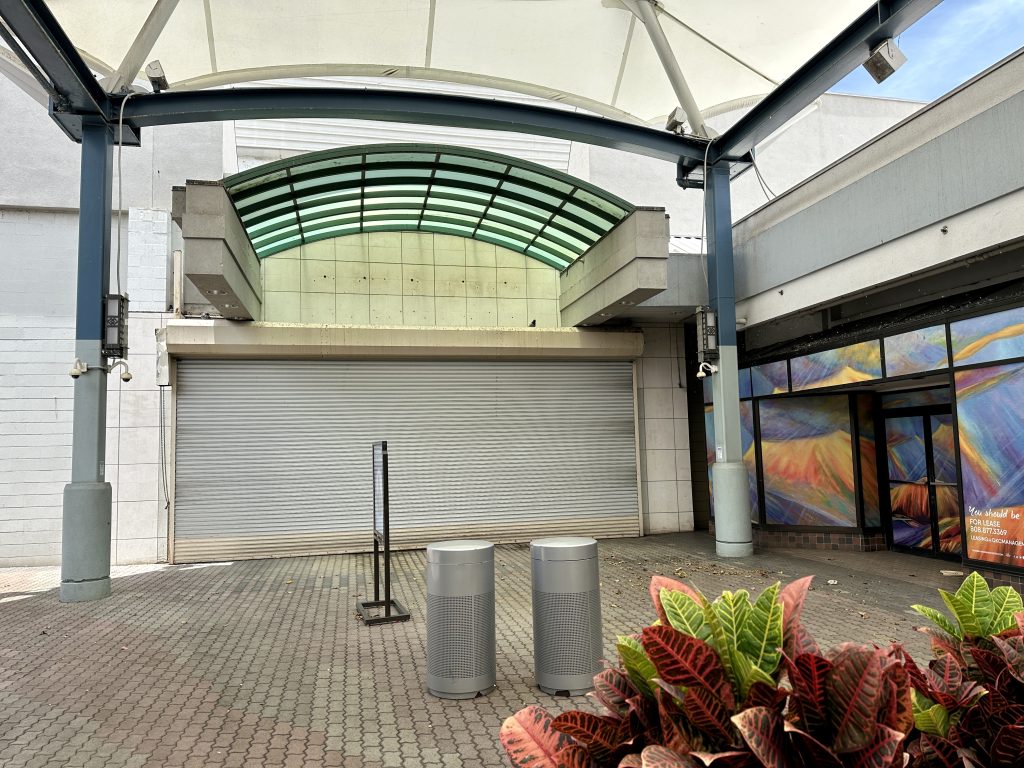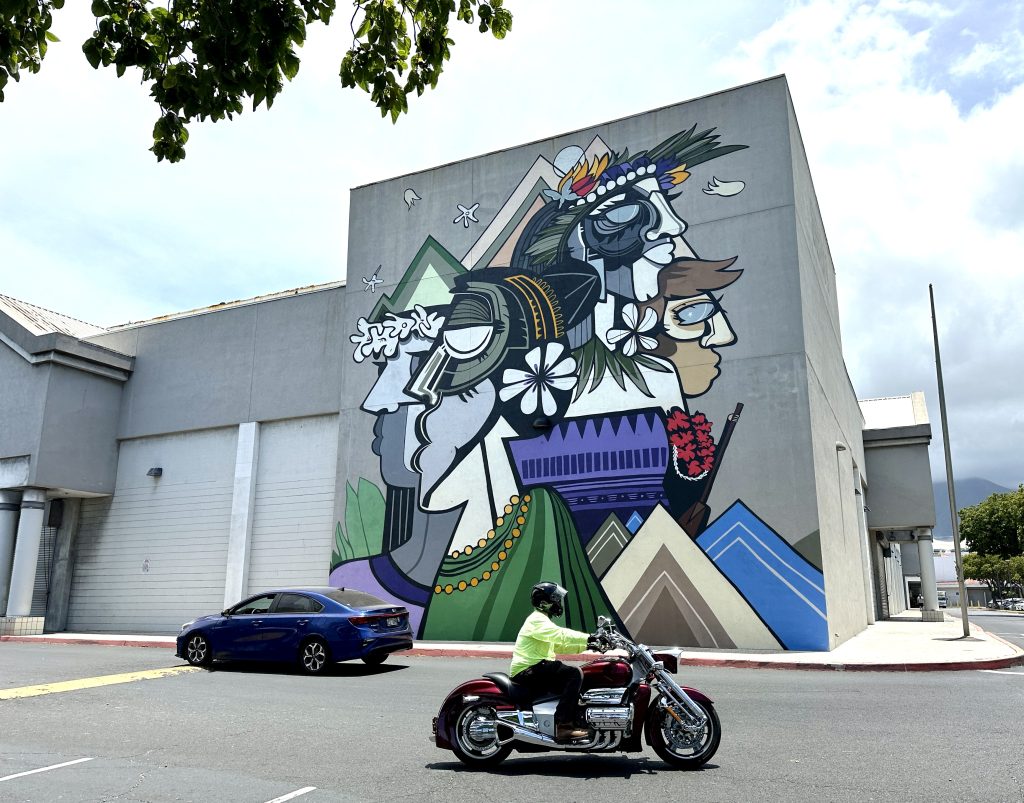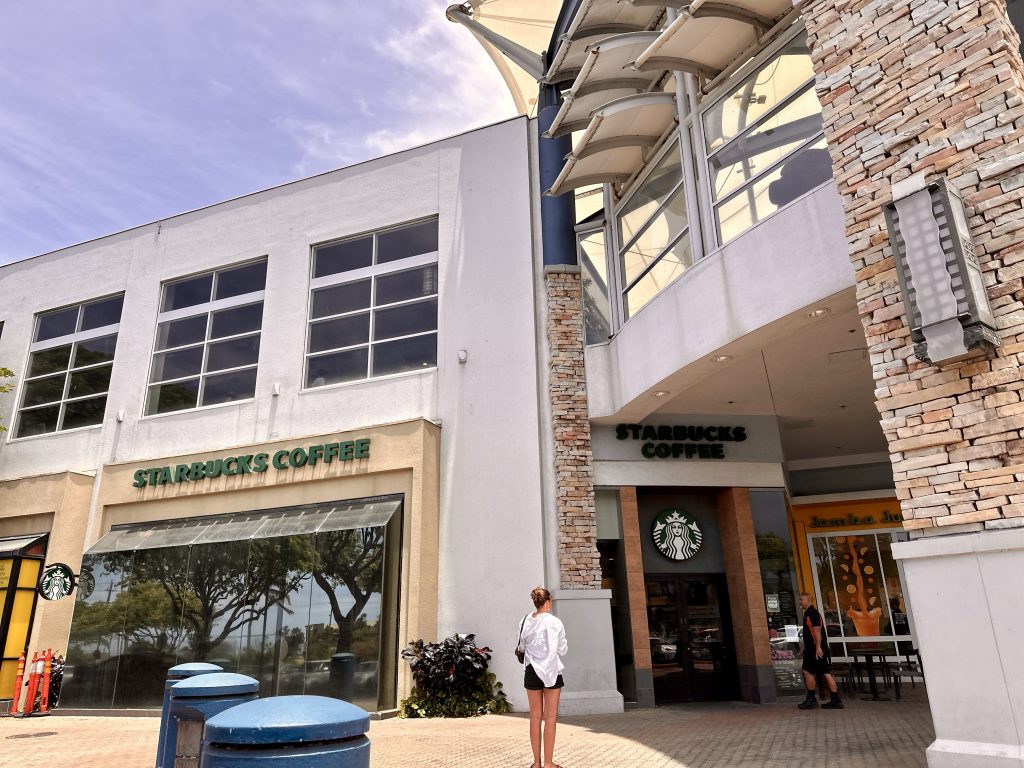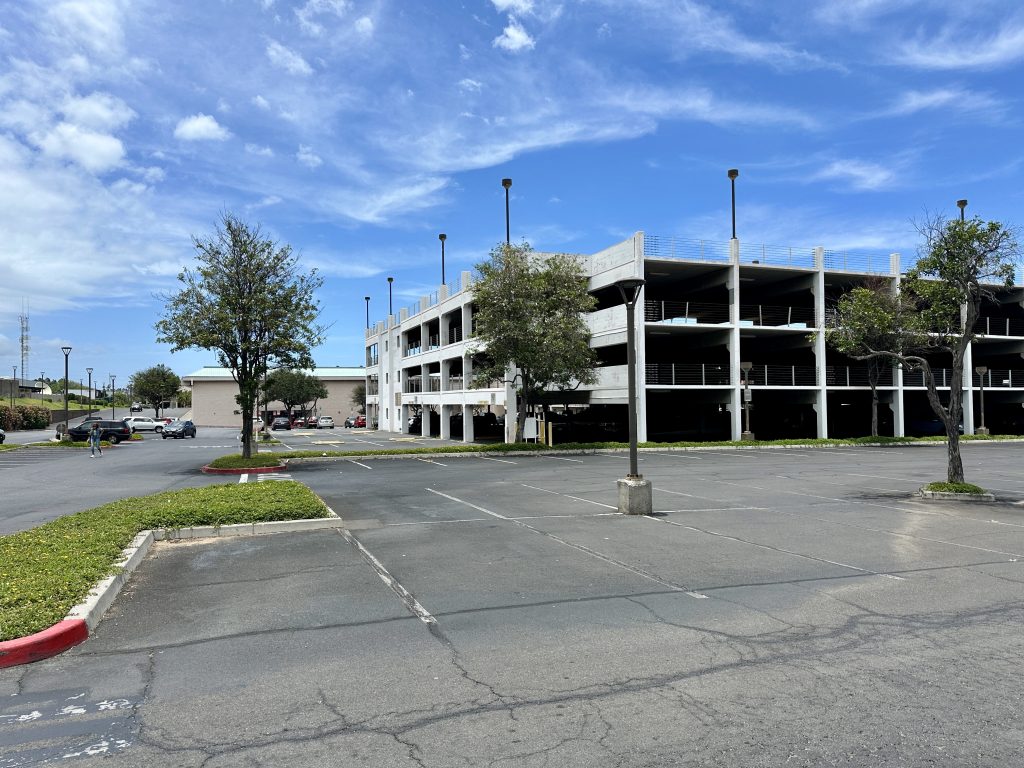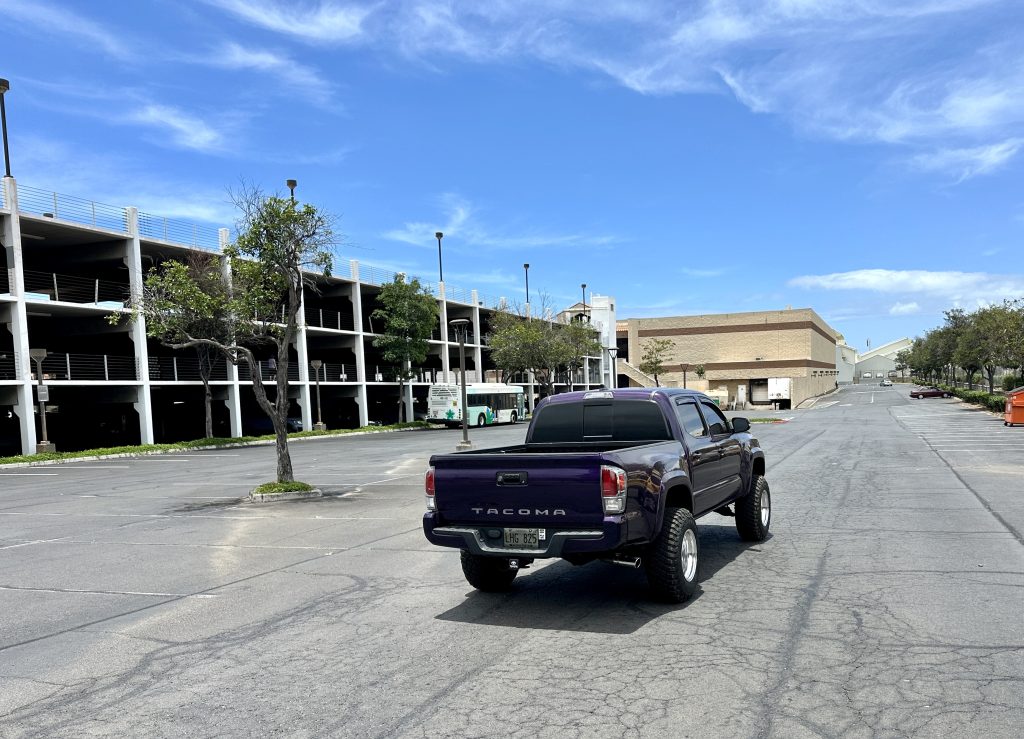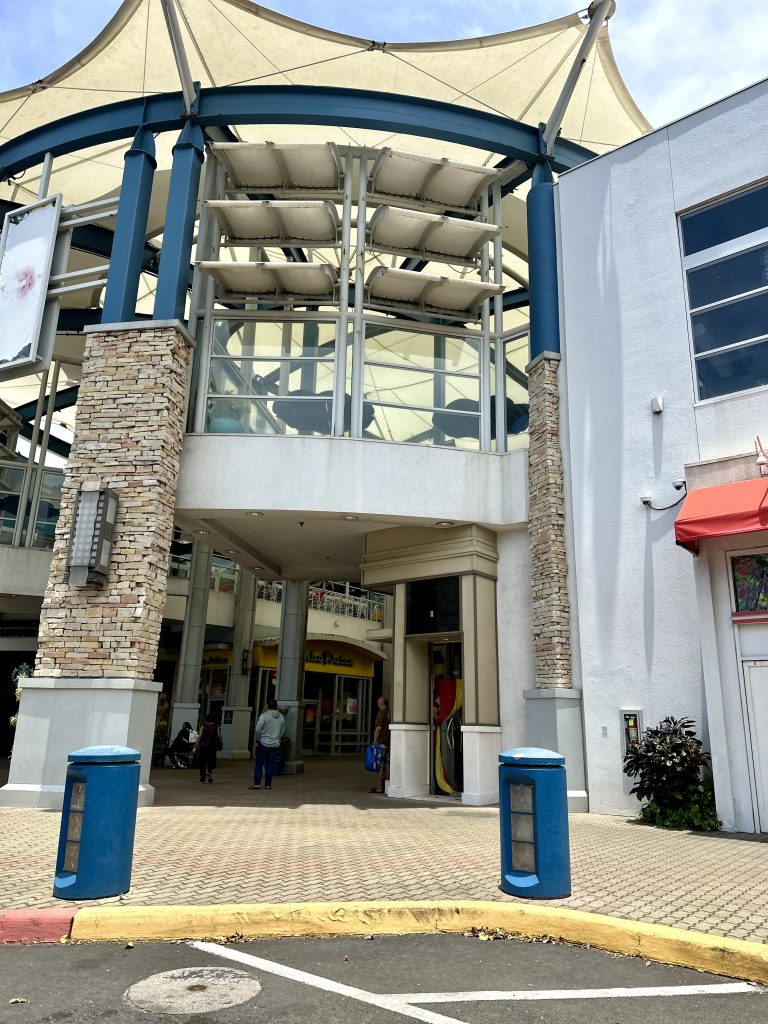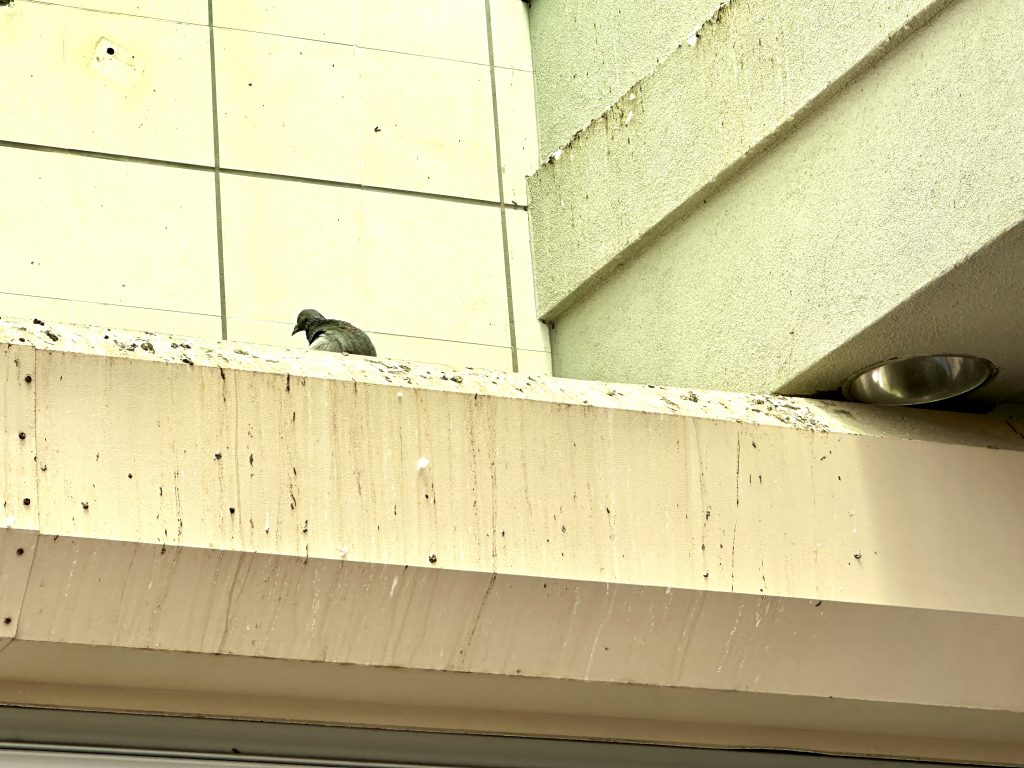What’s in store for Queen Kaʻahumanu Center’s future? Mall owners seek new lease on life

Without resuscitation, the future is bleak for Queen Kaʻahumanu Center, with the aging, once premier Central Maui shopping destination caught in a downward spiral — store closings lead to less foot traffic, which begets more loss of business, and so on.
The center’s woes are symptomatic of the national decline of brick-and-mortar shopping malls. In 2022, 700 large shopping malls closed in the United States. A lack of foot traffic by shoppers has been fueled by the popularity of convenient online shopping with giants such as Amazon — a trend accelerated by shifting consumer habits following the COVID-19 pandemic.
Former Queen Kaʻahumanu anchor tenant Sears shuttered its retail operations at the mall in November 2021. Consolidated Theatres closed its Kaʻahumanu movie theaters in July 2023, after nearly 30 years. And, in the not-to-distant future, one of the center’s two Macy’s retail stores will close and consolidate into a single store, according to a June 5 presentation by mall owners and consultants to members of the Maui County Council’s Housing and Land Use Committee.
The panel unanimously recommended approval of the center’s request for a community plan amendment and change of zoning. Bills 67 and 68 advance to the full Council for first reading as early as July 5.
On Tuesday morning, the center released the following statement:
“The change in zoning is just the first step in a thoughtful process that will allow an evolution of Queen Ka‘ahumanu Center. Once we are rezoned, we can then properly evaluate the opportunities available based on the needs of the community.
“A Special Management Area permit will be required, which necessitates further agency consultation, review by the Urban Design Review Board, and a public hearing before the Maui Planning Commission.
“We invite all Maui residents to participate in our ongoing community survey to help us shape the future of Queen Ka’ahumanu Center.”
The survey is available here at the Center website, queenkaahumanucenter.com/community-survey/.
The Housing and Land Use Committee, chaired by Council Member Tasha Kama, recommended full Council approval of the two land use measures aimed at helping breathe life back into Queen Kaʻahumanu Center with a mixed-use, “re-imagining” of the complex, including “affordable, multi-generational and workforce housing.”
The bills provide for a Wailuku-Kahului Community Plan amendment for 6.75 acres and a change of zoning from M-2 Heavy Industrial District to B-3 Central Business District for 33.8 acres for the Queen Kaʻahumanu Community Center Revitalization and Infill Project.
The measures, initiated by the County Council and introduced by Kama, received a unanimous recommendation for approval from the Maui Planning Commission, would make way for mixed-use development including residential, retail, office, services, open and green space.
The mall’s current heavy industrial zoning does not allow for multifamily residential uses.
“This endeavor we’re working on is trying to find solutions that help us reimagine this mall and take it towards its present and future into something that serves the community better than it does today,” said John Mitchell, representative of the mall owner, during the June 5 committee meeting. “M-2 industrial zoning is not helpful with finding an ultimate solution here, which we hope is going to be one of mixed uses that brings more potential residents, as well as shoppers and maybe some businesses to this site that will help serve the community going forward and offer a more robust experience.”
Opened in 1972, Queen Kaʻahumanu Center has more than 570,000 square feet of leasable space with a food court, restaurants and current tenants including Macy’s, Victoria’s Secret, Bath & Body Works. The center has welcomed 2.6 million visitors annually, generated more than $100 million in annual sales and $500,000 in tax revenue to Maui County.
Currently, tenants with long-term leases occupy only 41% of the center; the remaining 51% is either vacant or at risk of becoming vacant, council members heard. National retailers abandoned the mall, even after being offered free rent.
The mall’s general excise tax revenue has declined 27% since 2014. The mall also needs repair and maintenance work, including the parking structure that needs “major repairs.” In November 2020, then mall owner QKC Maui Owner LLC was hit with a foreclosure lawsuit from US Bank, on behalf of commercial mortgage-backed securities, for defaulting on a $88.5 million loan initiated in 2014 and still owing $87.4 million in October 2020.
Still, the mall continues to be a gathering place for residents, hosting more than 50 community events annually, such as Maui Matsuri, the Prince Kūhiō Maui Ho’olaule’a, Maui Steele Guitar Festival, Abilities Awareness Fair and Festivals of Aloha. This past Saturday, the center was bustling people drawn to music and other activities related to the 2024 Nā Kamehameha Commemorative Pāʻū Parade and Hoʻolauleʻa.
Kauwela Bisquera, the center’s general manager, thanked Council Member Tom Cook for visiting the mall for a walk-through, including its vacant spaces.
“The reality is we are struggling,” she said, no matter how much work has been done with local business owners. “It’s still not viable or sustainable at this point.”
To get the community’s input on the future of the shopping center, the mall owners conducted a survey with more than 580 participants, 92% of those residents. The survey found that 97% of respondents believe there should be “potential housing solutions that fit within a multi-generational or diverse community framework at Queen Kaʻahumanu.” Seventy-seven percent of respondents said the center should prioritize mixed-use developments that incorporate housing, retail and commercial spaces.
Lemore Czeisler, Pacific Retail Capital Partners vice president development, said the community members also said they wanted green communal spaces, diverse housing options targeted to Maui residents, “elevated” restaurants, services, and a gathering place for arts and entertainment.
Czeisler emphasized that Queen Kaʻahumanu is not alone in needing to make changes to suit the tastes of consumers.
“It’s all malls across the country,” she said. “They all need to adapt to be relevant. They all need to transform to create more diverse types of uses, and not just have things that actually e-commerce has taken over.”
Successful shopping centers need to “draw people in, get them out of their houses, get them off of their laptops, get them off of their phones because everything else you can just buy a T-shirt from China on your phone,” she said.
Czeisler said she envisions yoga and hula classes and playgrounds for children. “We can use this space a lot better than these vacant stores,” she said.
With the addition of housing, “you then have that hub; you create that hub,” she said. People living in close proximity to the mall can walk to Foodland to get their groceries.
“People want to be able to go into a nice open space, sit down, have picnics, have lunch and just create that foot traffic, and then maybe they’ll stop off and buy things,” she said.
This is not the first time there’s been a suggestion to make Queen Kaʻahumanu a future site for housing. A pitch to do so by the former administration of Michael Victorino was shot down by Council members in June 2022.
Then, Council members voting to file the matter in committee were: Tamara Paltin, Kelly King, Keani Rawlins-Fernandez, Shane Sinenci and Mike Molina. Those voting to keep the bill alive were: Gabe Johnson, Alice Lee, Tasha Kama and Yuki Lei Sugimura.
Currently, the shopping complex has 2,728 parking spaces, now often or mostly vacant. The mall has two parking structures.
During a Jan. 23 presentation to the Maui Planning Commission, Michael Summers, president and founder of Planning Consultants Hawaiʻi, said the proposed bills have a couple of significant zoning conditions: one is a 90-foot limit for building heights (B-3 Central Business District zoning allows for building heights of up to 144 feet); and the other is to reduce the amount of required on-site parking from two to one stall per multifamily unit with less than 1,500 square feet.
“And the rationale for that is quite simple,” he told commissioners. “First, obviously, it’s going to reduce building costs and reduce housing costs. Secondly, it will facilitate more efficient and better master planning for the site. It’s not going to be just massive amounts of concrete.” He added that there’s less demand for parking with that size of a multifamily housing unit.
Based on a building with each floor designed with a height of 10 feet, a 90-foot building could accommodate nine stories.
The property owner has no specific development plans currently proposed.
Before Kaʻahumanu Center redevelopment can proceed, the project will need a major special management area permit, subject to approval by the Maui Planning Commission.
The SMA review process is “very rigorous,” Summers told the commission. “It requires a full development impact assessment with detailed technical studies, notification of property owners, publication in The Maui News, and, importantly, a public hearing for you folks.”
The Department of Planning recommended approval of the proposed community plan amendment and change of zoning. But it noted in its report (Page 28) that because no development is currently proposed, there are no assessments impacts to infrastructure, including water, wastewater, drainage, roadway, solid waste, electrical, telephone or cable. There’s also no means to assess impacts to parks, schools, police, fire or medical services — all of which will be taken up during the SMA permit review process.
Wailuku resident Jason Economou, an attorney specializing in housing policy and land-use regulation, submitted written testimony to the commission and County Council in support of the measures for Queen Kaʻahumanu Center’s revitalization, calling them “a clear step in the right direction.”
He said he brings his toddler to the mall on rainy days. “On all these occasions, I marvel at how great the architecture and location of the property is, and how underutilized it is,” he said. “This impressive structure in the heart of town tries hard to bring in the community with activities and events, but the decline in brick-and-mortar retail activity over the past two decades has resulted in our mall becoming a mere husk of what it once was.”
Economou said he has been involved in housing and community planning in Central Maui, and “I know the community is strongly in support of mixed use development and adaptive reuse of commercial spaces to address our housing crisis, and I know that the Queen Kaʻahumanu Center has often been cited as an optimal location for such adaptive reuse and redevelopment.”
The center property is owned by GSMS 2014-GC26 West Kaʻahumanu Ave LLC. The property manager is Pacific Retail Capital Partners.
There’s an abundance of background information available online about the evolving shift from in-person to online shopping, including:
- The Aug. 30, 2021, Forbes’ article: “What The Decline Of Brick-And-Mortar Sales Means For Retail Marketing“
- The Nov. 6, 2023, Business.com article: “From Mall Madness to Sadness: Why Shopping Centers May Soon Be Obsolete“
- The Nexuses article: “The fall of traditional commerce“
Editor’s note: This story has been updated from its original post on Monday to include a statement received Tuesday morning from Queen Kaʻahumanu Center.




